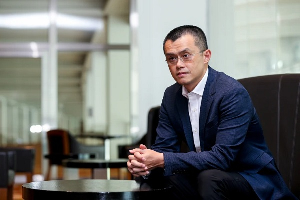- Home - News
- TWI News | TV
- Polls
- Year In Review
- News Archive
- Crime & Punishment
- Politics
- Regional
- Editorial
- Health
- Ghanaians Abroad
- Tabloid
- Africa
- Religion
- Election 2020
- Coronavirus
- News Videos | TV
- Photo Archives
- News Headlines
- Press Release
Business News of Wednesday, 26 August 2015
Source: Daily Guide
Micro-finance sector assets hit GH¢1.2bn
Total assets of the micro-finance sector reached GH¢1,290.1 million as at June 2015, representing about 1.7 percent of the total assets for the banking industry.
Loans and advances were GH¢587 million, representing 45.5 percent, which were deployed to various sectors of the economy while GH¢99.3 million was invested in government securities, representing 7.7 percent.
The micro-finance institutions in the country also mobilized GH¢946.9 million in deposits as at June 30 2015, representing 73.4 percent of total assets of the industry.
Raymond Amanfu, Head, Other Financial Institutions Supervision Department, who was speaking at a press briefing in Accra recently, said “with this modest growth levels, MFIs have a role to play in bringing banking to the doorsteps of our populace and promote financial inclusion.”
He said the average capital adequacy ratio was 58 percent as at June 2015 compared with a statutory requirement of 10 percent.
However, Mr. Amanfu said there are quite a number of micro-finance institutions, which are non-complaint with the statutory level for 10 percent.
He said the Central Bank recently increased the minimum paid up capital for micro-finance companies and money lending from GH¢500,000 and GH¢300,000 respectively to GH¢2,000,000.
Mr. Amanfo said the convergence of capital requirement for micro-finance companies and money lending companies was to avoid regulatory arbitrage.
He said the increase in the capital requirement is also to position the institutions to carry out the needed financial intermediation, stating “it is good to have the capacity to absorb risks than numerous weak institutions which could pose systemic risk.”
The capital required from any licensed institution, including micro-finance institutions, is not kept by the Central Bank but used by the institution to meet the start-up cost and initial recurrent expenditure, among others,” Mr. Amanfo said.











